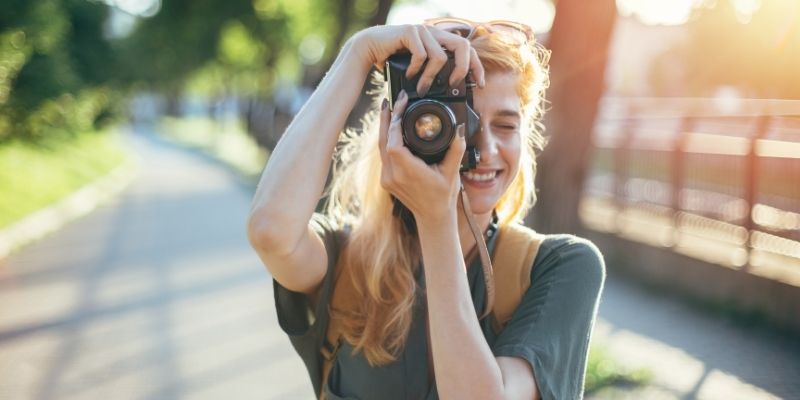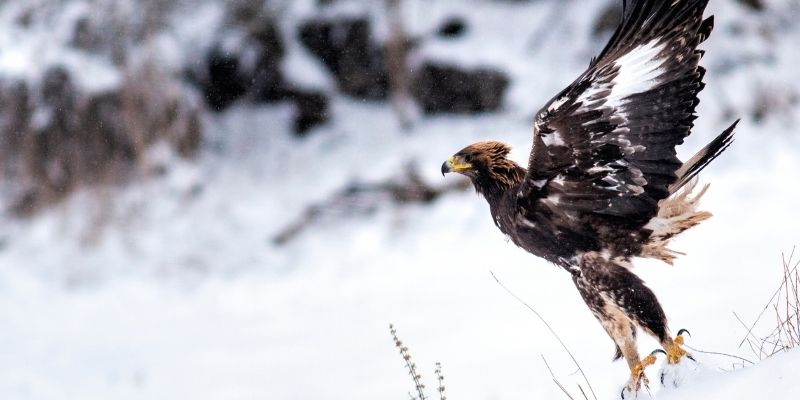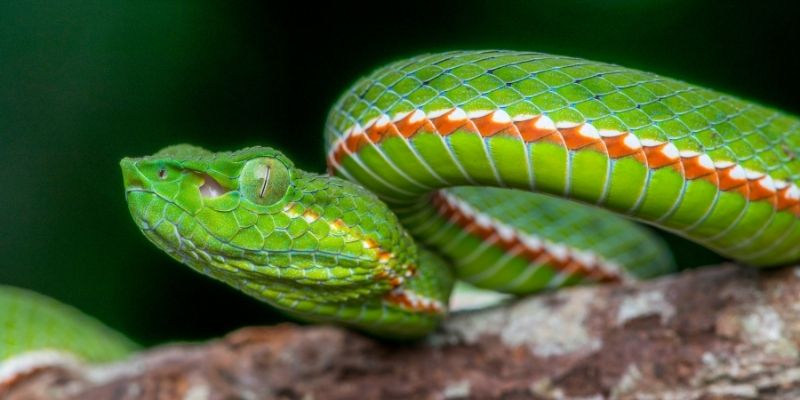How to Get a Job in Wildlife Photography.
If you’re envious of the stunning images of wildlife in the National Geographic, or the works of people like David Attenborough or Robert Irwin have inspired you to get behind the camera to capture powerful shots of animals and landscapes, a career in wildlife photography could be perfect for you.
Many people have an adoration for animals, and as wildlife photography is centred around taking images of all kinds of animals and wild creatures, it’s an incredibly popular pastime. Though, with so many people exploring this space, you may be wondering how to make money with wildlife photography.;
In a lot of ways, the answer is simple: your images need to stand out from the competition. You cannot become a successful professional wildlife photographer if you can’t take a good photograph. So, the first thing you have to do is learn the skills to get behind the lens.
Getting into wildlife photography can be difficult if you don’t possess a desirable mix of skills and experience. That’s why in addition to learning how to do wildlife photography, you need to practice your work, build up a portfolio and know how to get your work noticed.
If you’re not sure how to do this, we explain how to get into wildlife photography below.

Study Wildlife Photography Courses
First things first, you need to learn how to take show-stopping images of wildlife. Now, this isn’t as simple as pointing and shooting the camera, as there are many other elements you need to master and understand.
This is why studying a course focused on giving you these skills is the best way to start. The online Wildlife Photography Level 3 Award (RQF) offered by Stonebridge Associated Colleges, for instance, teaches you exactly how to learn wildlife photography.
During the course, you will learn all about digital photography and how different techniques are better suited to different animal species. The course also explains in detail how best to edit your photographs in postproduction.
Altogether you will study:
Digital Photography
- Learn all the components of a digital camera
- Understand how the basic controls and parameters work
- Be able to apply photographic techniques
- Understand image composition
- Understand camera usage in animal photography
Wildlife Photography
- Learn the best techniques for photographing different species
- Know how to apply the best techniques for landscape and ecosystem photography
- Understand the concept of storytelling in wildlife photography
- Understand the basics of photo editing and postproduction
- Become familiar with ethics when working with animals
- Be able to produce a wildlife photography portfolio

This knowledge and skillset will help take your amateur wildlife photography to a professional level, so you will be able to earn money from your work.
What’s more, this course is based entirely online. So, you can develop your wildlife photography skills at home and fit your education comfortably around your existing commitments.
Get Wildlife Photography Work Experience
Like learning how to do wildlife photography, no one will employ you as a wildlife photographer unless you have experience and can show evidence of your work. This is why gaining wildlife photography work experience is so important, as it helps you build up a portfolio of images that you can show to prospective employers.
Getting wildlife photography work experience is also a great way to network and make industry contacts, which can also lead to employment. You may work with someone who you impress who wants to hire you directly, or they may be aware of another employer with vacant positions.
Otherwise, wildlife photography work experience is an excellent way to get professional recommendations. You can then show these within future interviews for wildlife photography jobs to prove your skills and ability to employers.
One of the best ways to find work experience opportunities is to reach out to different companies, ideally ones you would like to work with, and offer your services for free. If they need the help they will appreciate an extra pair of hands to reach deadlines for their clients.
Enter Wildlife Photography Competitions
A great way to get your work noticed by employers is by entering wildlife photography competitions. There are more of these than you might think, and each provides an ideal opportunity to get as many eyes as possible on your work.
Should you become a finalist, or even win, your work will be shown on numerous websites, in related print materials and online platforms. This provides a great opportunity to gain a following on your own social platforms where your work is shown. It also means key people in the industry will come across your work and can reach out to you if they want to offer you a professional opportunity.

Just some of the competitions you can enter include:
- Bird Photographer of the Year
- British Ecological Society Photography Competition
- Comedy Wildlife Photography Awards
- Luminar Bug Photographer of the Year
- Mammal Photographer of the Year
- Nature Photographer of the Year
- National Geographic
- Ocean Photography Awards
- Underwater Photographer of the Year
- Wildlife Photographer of the Year
- World Press Photo Contest
Jump on Wildlife Awareness and Celebration Days
Another great way to work towards taking professional wildlife photography is by taking part in national and international wildlife photography days, and those celebrating wildlife in general. With social media platforms giving rise to trends going viral, like wildlife photography competitions, it’s a very quick way to have your work seen by the masses.
Ideally, your images will be of the wildlife you want to spend your time professionally photographing. So prospective employers can see more easily how you would be an ideal fit for their company. Though, to get started there’s nothing wrong with jumping on the back of holidays involving domestic pets and livestock.
A handful of the animal and wildlife holidays you could take part in are:
- International Guide Dog Day
- National Bird Day
- National Pet Day
- National Photography Month
- National Wildlife Day
- Squirrel Appreciation Day
- World Animal/Pet Day
- World Hamster Day
There are also holidays celebrating or raising awareness for more exotic animals. These are an excellent opportunity to have your work seen by influential people in the industry should you want to specialise in this type of wildlife photography.
You could take part in:
- Elephant Appreciation Day
- Polar Bear Day
- Reptile Awareness Day
- Save the Rhino Day
- World Penguin Day
- World Turtle Day
Take some amazing images related to these animal and wildlife holidays and upload them to social media with the appropriate hashtags!
Take Part in Wildlife Photography Trips and Excursions
If you’re looking to get into exotic wildlife photography as opposed to British wildlife photography, a great way to align yourself with this work is by taking part in wildlife photography trips and excursions.
While these happen all over the UK too, they are especially helpful if you want to build up a portfolio of images of wildlife in Africa, India, Australia or any other overseas location. Besides knowing where to find groups of animals to photograph, the guides on your course can give you direct advice and instruction as to how to get the best results from your work.
This is understandably something you cannot gain when studying a wildlife photography course UK. This is why the lessons gained on these trips are so invaluable, as are the images you can add to your wildlife photography portfolio. In addition to this, the professional photographers leading the excursion may also be able to put you in touch with companies offering exotic wildlife photography jobs.
Consider Working for Yourself
You might be focused on finding out how to get a job in wildlife photography, but you may want to consider the option of working for yourself.
In many cases, wildlife photographers are self-employed and gain their income by selling their work in various ways. While opportunities do exist for full-time employment, the availability of these is limited and turnover in roles isn’t very high.
Don’t let this diminish your hopes of making a living from your images, there are many ways you can turn your work into profit as a freelance wildlife photographer.
You could:
- Sell your wildlife photography at craft fairs
- Run wildlife photography workshops
- Deliver talks and presentations on how to do wildlife photography
- Sell your images to newspapers and magazines
- Sell your prints through your website or social media platforms
These methods and more can all help you turn your hobby into a profitable career.
Start Learning Wildlife Photography with Stonebridge
If ready to take your amateur wildlife photography to the next level, Stonebridge Associated Colleges can help you elevate your skills. Our online Wildlife Photography Level 3 Award (RQF) will equip you with the skills and know-how to make it as a professional photographer in a competitive industry.
If you’d like to find out more about the course or discuss further the benefits of online learning, call our Course Executives today. They can answer all the questions you have and help you take the next steps to enrol.
Call them on 0121 392 8288 or contact them online now. Alternatively, you can read more about what wildlife photography is in our blog.



















